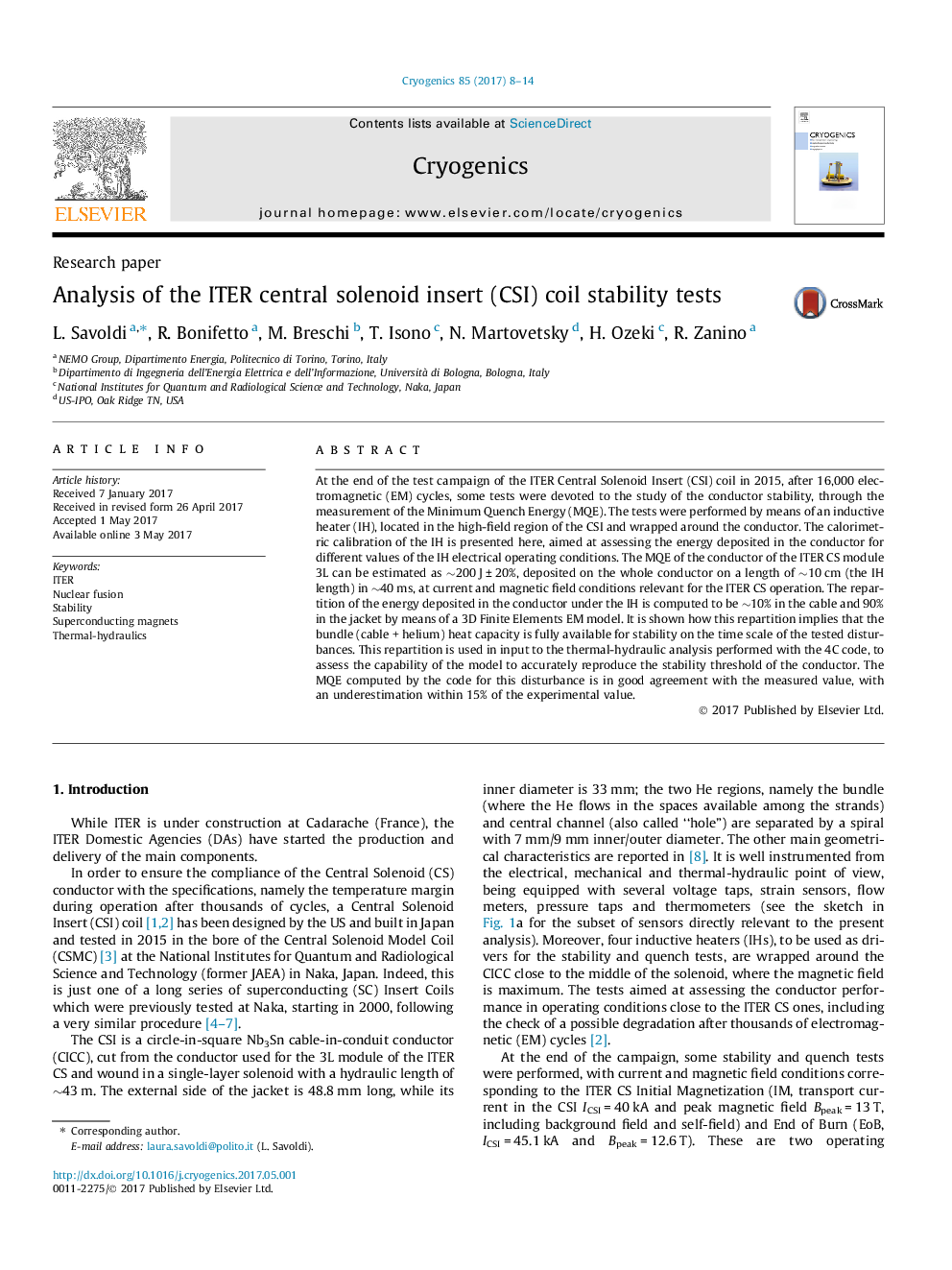| کد مقاله | کد نشریه | سال انتشار | مقاله انگلیسی | نسخه تمام متن |
|---|---|---|---|---|
| 5444088 | 1511028 | 2017 | 7 صفحه PDF | دانلود رایگان |
عنوان انگلیسی مقاله ISI
Analysis of the ITER central solenoid insert (CSI) coil stability tests
دانلود مقاله + سفارش ترجمه
دانلود مقاله ISI انگلیسی
رایگان برای ایرانیان
کلمات کلیدی
موضوعات مرتبط
مهندسی و علوم پایه
مهندسی مواد
مواد الکترونیکی، نوری و مغناطیسی
پیش نمایش صفحه اول مقاله

چکیده انگلیسی
At the end of the test campaign of the ITER Central Solenoid Insert (CSI) coil in 2015, after 16,000 electromagnetic (EM) cycles, some tests were devoted to the study of the conductor stability, through the measurement of the Minimum Quench Energy (MQE). The tests were performed by means of an inductive heater (IH), located in the high-field region of the CSI and wrapped around the conductor. The calorimetric calibration of the IH is presented here, aimed at assessing the energy deposited in the conductor for different values of the IH electrical operating conditions. The MQE of the conductor of the ITER CS module 3L can be estimated as â¼200 J ± 20%, deposited on the whole conductor on a length of â¼10 cm (the IH length) in â¼40 ms, at current and magnetic field conditions relevant for the ITER CS operation. The repartition of the energy deposited in the conductor under the IH is computed to be â¼10% in the cable and 90% in the jacket by means of a 3D Finite Elements EM model. It is shown how this repartition implies that the bundle (cable + helium) heat capacity is fully available for stability on the time scale of the tested disturbances. This repartition is used in input to the thermal-hydraulic analysis performed with the 4C code, to assess the capability of the model to accurately reproduce the stability threshold of the conductor. The MQE computed by the code for this disturbance is in good agreement with the measured value, with an underestimation within 15% of the experimental value.
ناشر
Database: Elsevier - ScienceDirect (ساینس دایرکت)
Journal: Cryogenics - Volume 85, July 2017, Pages 8-14
Journal: Cryogenics - Volume 85, July 2017, Pages 8-14
نویسندگان
L. Savoldi, R. Bonifetto, M. Breschi, T. Isono, N. Martovetsky, H. Ozeki, R. Zanino,